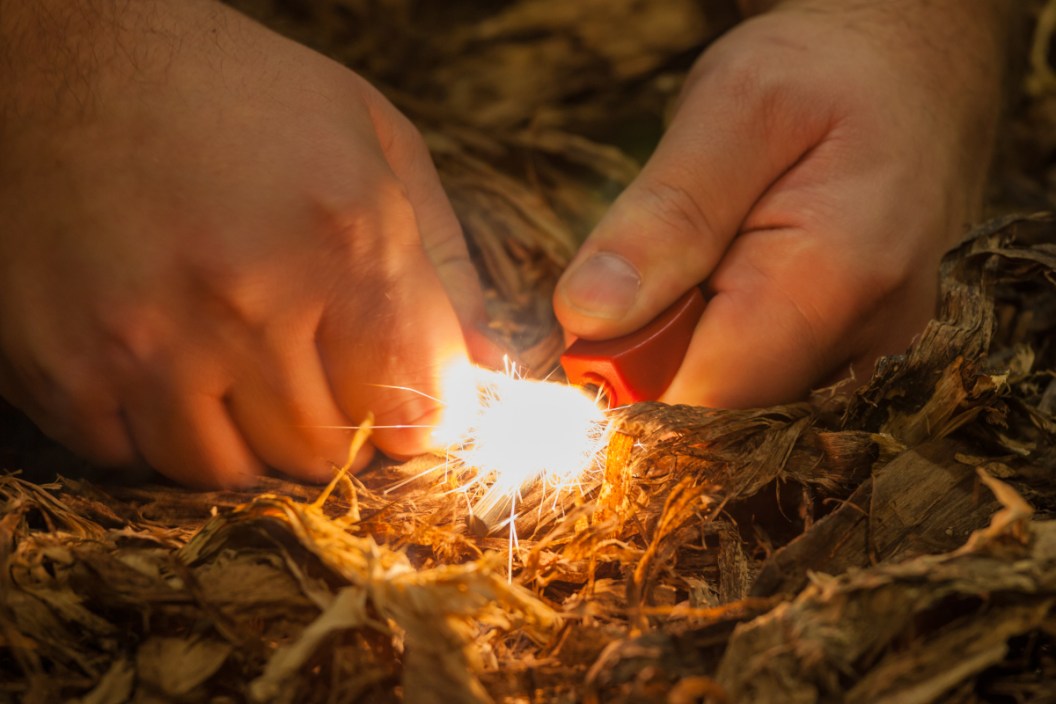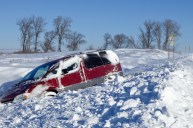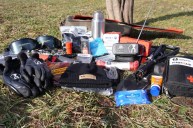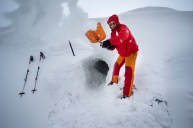You should test this gear BEFORE your life depends on it.
We love camping and we love the outdoors. Probably everyone who goes out camping (or hunting or fishing) in the backcountry has at least a few survival tools on hand. You know, the usual stuff, a survival knife, a water bottle, first aid kit, or even a paracord bracelet.
But have you ever taken the time to test this gear? Or do you just carry it with you? Do you think someone like Bear Grylls uses his gear without ever testing it?
The answer to that should be obvious. You probably shouldn't do it either.
That's why today, we'll go over some vital camping survival items and why it is important to test them BEFORE you add them to your survival or bug out bag.
Fire starters
Read just about any outdoor survival story and you'll likely read about the survivors struggles with fire starting. Sometimes they have issues even if they DO have a fire starter. Why? Often because the person never used one before.
You may say "What's the harm of learning in the field?" Well, imagine a situation where someone has fallen through thin ice in freezing temperatures and you only have minutes to get them warm before hypothermia sets in. That is NOT the time you want to be learning how to use your fancy magnesium fire starter!
It's not a bad idea to have more than one way to start a fire. Try an emergency match kit like this first, and if for whatever reason the matches get wet, move to a fire starter.
First Aid Kits
First aid supplies are not really an item you should test, but at the very least, you should look through any medical kit that you buy before you throw it in your gear bags and take off on an outdoor adventure. The reason for this is simple: some kits can be made better with a few small additions.
Take this kit on Amazon as an example. This one has a lot of multi-function survival gear. There are knives, wire saws, a flashlight, some simple fishing gear, a magnesium fire starter, compass and multi-tool in addition to the standard medical bandages and gauze. Some will also include things like ponchos, bottle openers, carabiners, headlamps, lanyards, ultralight space blankets and more. Just be sure to look it over closely. This stuff is often mass-produced and can better be replaced by high-quality new products.
That's all great, but I would add some things. A signal mirror isn't a bad idea. Another really good idea is aspirin. Remember, aspirin isn't just for headaches. It could also save someone's life during a heart attack.
Another good addition is insect sting relief wipes. I've used these out of my own kit before and was glad I had them.
With most first aid kits, you usually get what you pay for. The more you spend, generally the better the kit. But always look through it to see if there are any additional items, like some duct tape, that you can fit inside to make it an even better addition to your camping equipment. And of course, be sure you're restocking things that you do use, or your kit's going to be subpar. Keep in mind that a first aid kit is for more than just a camping trip. They may also save your life during a natural disaster someday. When it comes to protecting the ones you love, you will be glad you did not skimp.
Water purification devices
Hydration may be the most important part of preparedness for any survival scenario. Drinking water is something you might not think to test until you need it. Many people buy a Lifestraw water filter and many people love them. But this may not be the water purification solution for everyone.
Owning a Lifestraw means walking to the nearest water source every time you are thirsty. Some people don't like how low to the ground and water you have to get to use this product. If this doesn't sound appealing to you, you might want to consider a water bottle filtration system, purification tablets or some other form that allows you to fill up water bottles and keep a supply on hand.
With whatever system you choose, it's important to try it out before an emergency. Humans aren't perfect. Factory-defect items do get through sometimes and if you accidentally get a defective water purification system and don't discover it until you're dying of dehydration, well, you're out of luck. Make sure the system works and that it is to your liking ahead of time.
Multi-tools
Buying multi-tools is a lot like buying first aid kits. You get what you pay for. Better quality steel tools from reputable brands will generally cost more. If you end up in survival situation, you're likely going to wish you hadn't gone cheap when that $5 pocket knife from Walmart suddenly breaks. For blades, edge retention is king. Something like S90V stainless steel may be more expensive, but it will need to see the sharpener a lot less often. Most pro survivalists will tell you not to skimp on knives or pliers.
There are lot of everyday carry (EDC) multi-tools out there, and some of them have blades that are dull the moment you take them out of the box. They might have a tiny pair of scissors that is barely functional. Many multi-tools have a can opener, but it's often undersized and somewhat awkward to use. It might be best to have a dedicated opener in your survival kit.
Sometimes it's just a functionality issue. Take the Keyport Multi-tool that I reviewed several months back, for example. It's advertised as having a flathead screwdriver, but that part of the tool is way too wide for most hardware I would use it on. It's not that it's necessarily a bad tool, but it's ill-fitted for most tasks I think I would probably face in an emergency.
Hatchets and Axes
Both make for great pieces of useful camping gear that can also be extremely useful in a survival situation. But a hatchet, axe, or even a machete does you no good when the blade edge is dull right out of the package! I've noticed the cheaper, mass-produced big box store hatchets seem to be the worst for this.
I've had good success with Gerber knives and hatchets having a good, sharp edge straight out of the box. But don't trust that just because it's new that the blade is good, see for yourself. If it isn't, make sure to sharpen it before you head into the field. Sure, there are ways to sharpen blades in the field if you must, but you can avoid a lot of headaches by checking ahead of time.
You'll also want to make sure the hatchet or axe of your choice has a handle that's comfortable for you. If you get into a situation where your life depends on it and you're continually using it, comfort will make the work you need to do more efficient.
A rubber grip will likely be more comfortable for a lot of chopping than a wooden one. This may seem like a small thing, but survival is as much mental as it is physical, and you should use anything that gives you a slight edge.
Sleeping bags/Tents
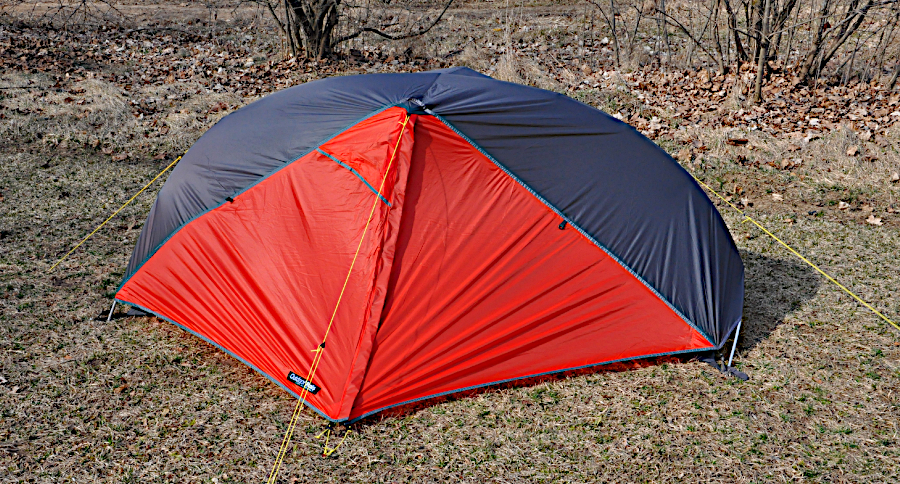
Travis Smola
Some people are probably going to just throw emergency blankets and tents in with their kits. I'd say it's probably fine if you don't test those. That's what they're made for. But if you have a real sleeping bag or tent included with your survival gear, you should probably test it ahead of time for a few reasons.
One of the sleeping bags I own is much too small for my frame and it's also probably a bit too light for especially chilly nights. That wasn't immediately obvious how small it was until I unrolled it for the first time.
If you buy something used (such as military surplus items) to fulfill the need for a survival bag and tent, you'll want to inspect it before you use it. The best way to do that is to set it up in the backyard. Second-hand camping equipment can be great, but you want to check it for leaks ahead of time.
I recently reviewed a nice backpacking tent that could also double as a tent to keep in a vehicle in case of emergency because of how lightweight and small of a profile it has. But again, set up your tent ahead of time.
I had a hard time figuring out this tent out the first time I set it up, and that was in ideal conditions. If you have a complicated tent, you don't want to find out under the cover of darkness with the rain pounding down on you.
Find the gear that suits you best.
A lot of the stuff we've gone over here might seem obvious at first glance, but spend some time reading survival stories and you'll see that in many real-life survival situations, people have overlooked many of the things I've outlined.
I've read stories when people needed help, but they forgot batteries for their radios. I've read others where "survival" tools have failed. Flashlights have malfunctioned. Matches get wet. Anything can happen.
Going to the extra work of testing and checking your gear may seem like a hassle, but if the time comes when you need it, you will be glad you did.
For more outdoor content from Travis Smola, be sure to follow him on Twitter and check out his Geocaching and Outdoors with Travis YouTube channels.
NEXT: 7 OF THE WORST RECORDED BEAR ATTACKS OF ALL TIME
WATCH: EXCLUSIVE LOOK AT THE BRAND NEW GERBER FASTBALL
